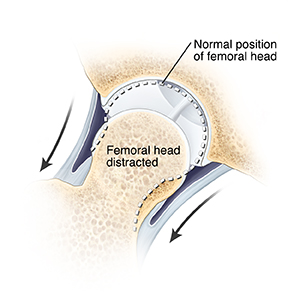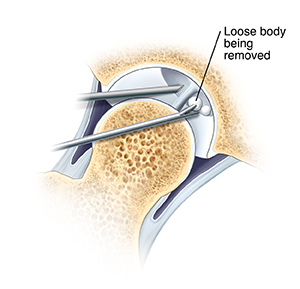When pieces of bone or cartilage are loose in your hip joint, they can cause painful joint locking and catching. Using a procedure called arthroscopy, your surgeon can remove any loose bodies from your hip. This procedure uses only small incisions and special tools. One of these tools is an arthroscope. This is a small, tube-shaped tool used to look inside your joints.
In the operating room
Just before surgery, you may be asked several times which hip is to be treated. This is a standard safety measure in the operating room. You will likely receive medicine (anesthesia) to make you sleep or make the area numb, or both.
During the procedure
After you receive anesthesia, your leg is gently pulled to widen your hip joint. Next, your surgeon makes a few small incisions called portals. Through these portals, they insert surgical tools, including the arthroscope. The arthroscope sends images of your joint to a video screen. These images allow your surgeon to look inside your joint. The joint is filled with sterile fluid to help your surgeon see more clearly.
Removing loose bodies
When your surgeon locates the loose bodies in your hip, they will try to remove them using a surgical tool, such as a grasper. But sometimes the loose bodies aren’t small enough to be removed. In this case, your surgeon will break down the loose bodies into smaller pieces. Then, the pieces are removed through the portals. Once your surgeon finishes the procedure, the portals are closed and bandaged. Then you are taken to the recovery room.



